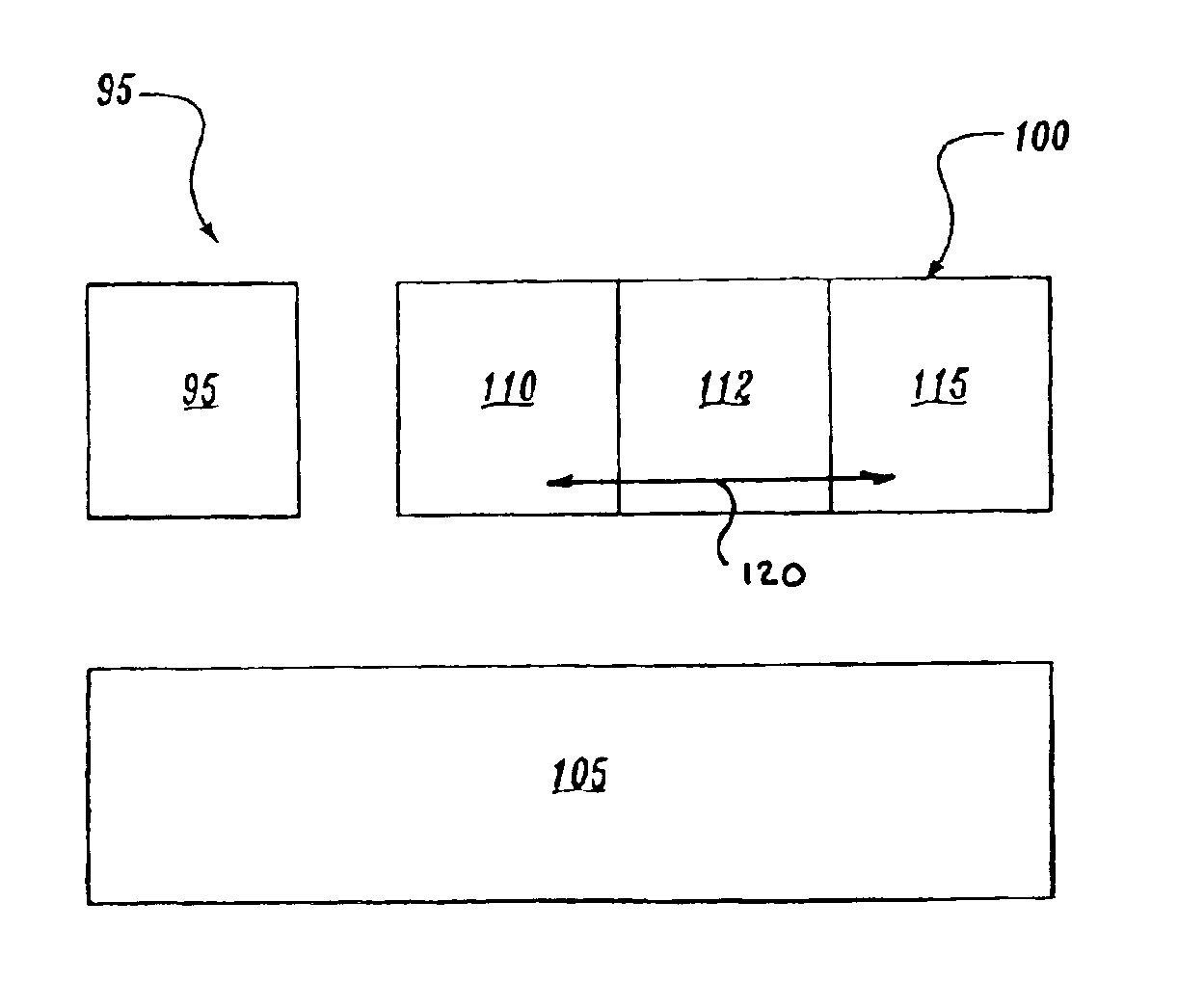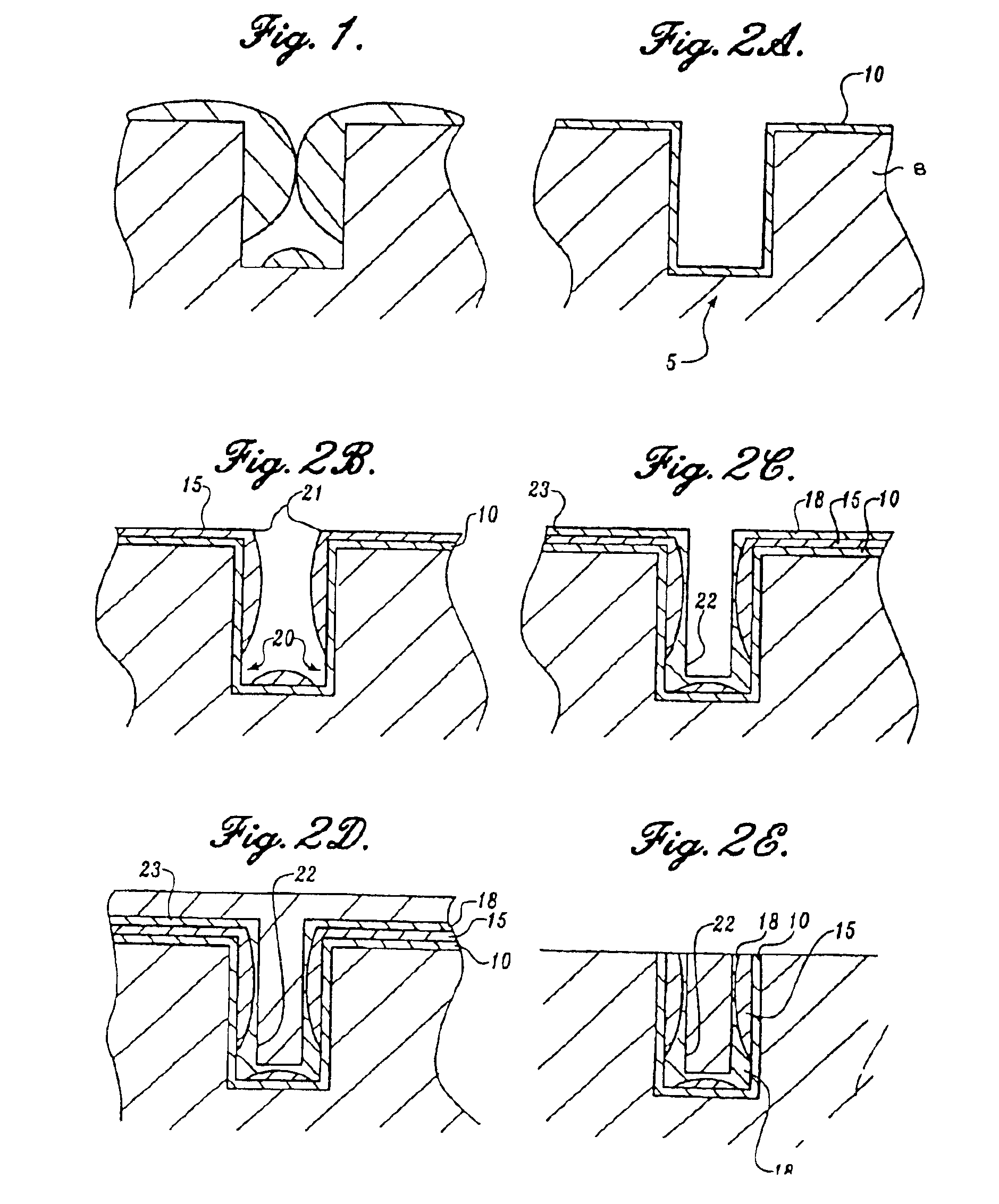Apparatus and method for electrolytically depositing copper on a semiconductor workpiece
a technology of electrolytic depositing and workpiece, which is applied in the direction of electrolysis components, printed circuit manufacturing, printed element electric connection formation, etc., can solve the problems of limiting the performance of integrated circuits, reducing the speed at which the integrated circuit may process electrical signals, and propagation delays, so as to achieve enhanced seed layers and ultra-thin seed layers.
- Summary
- Abstract
- Description
- Claims
- Application Information
AI Technical Summary
Benefits of technology
Problems solved by technology
Method used
Image
Examples
example 1
Comparison of Acid Copper Plating With and Without Seed Layer Enhancement
[0041]Semiconductor wafers 1, 2 and 3 were each coated with a 200 Angstrom PVD copper seed layer. In accordance with the present invention, wafers 1 and 2 had seed layer enhancement from citric acid and EDTA baths, respectively, the compositions of which are set forth below:[0042]Bath for Wafer 1: 0.1 M Cu SO4+0.2 M Citric acid+0.05 M H3BO3 in D.I. water at pH 9.5, temperature 25° C.[0043]Bath for Wafer 2: 0.1 M Cu SO4+0.2 M EDTA acid+0.05M H3BO3 in D.I. water at pH 12.5, temperature 25° C.
Wafer 3 did not have any seed layer enhancement.
[0044]The three wafers were then plated with a 1.5 micron copper layer from an acid copper bath under identical conditions. The following Table compares the uniformities, as deduced from sheet resistance measurements, of the three wafers after the deposition of a copper layer having a nominal thickness of 1.5 microns.
[0045]
TABLE 1Non-UniformityStandardEnhancementDeviationWaferBa...
PUM
| Property | Measurement | Unit |
|---|---|---|
| diameter | aaaaa | aaaaa |
| thickness | aaaaa | aaaaa |
| thickness | aaaaa | aaaaa |
Abstract
Description
Claims
Application Information
 Login to View More
Login to View More - R&D
- Intellectual Property
- Life Sciences
- Materials
- Tech Scout
- Unparalleled Data Quality
- Higher Quality Content
- 60% Fewer Hallucinations
Browse by: Latest US Patents, China's latest patents, Technical Efficacy Thesaurus, Application Domain, Technology Topic, Popular Technical Reports.
© 2025 PatSnap. All rights reserved.Legal|Privacy policy|Modern Slavery Act Transparency Statement|Sitemap|About US| Contact US: help@patsnap.com



